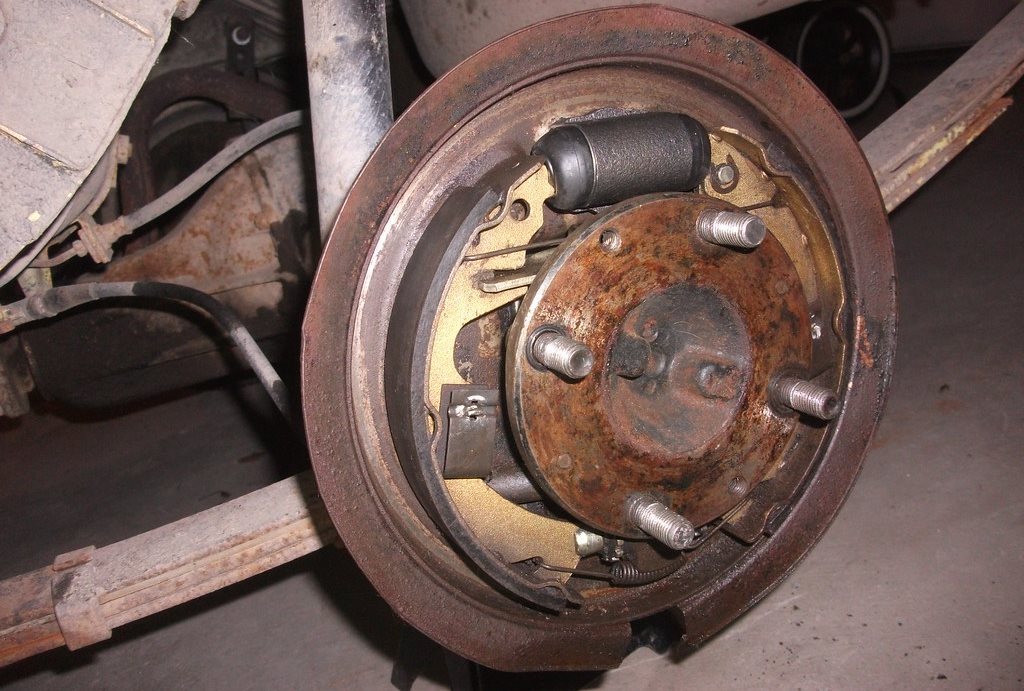What’s a Brake Backing Plate, and Why Should I Care?

Right, you know that feeling when you’re cruising along Peachgrove Road or tackling the roundabouts out by Rototuna, and you stomp on the brakes? There’s a whole lot of clever stuff going on behind the wheels – and one of the least glamorous, but super important, is the brake backing plate. If you drive something like an older Toyota Hiace, Mazda Demio, or even a Honda Jazz from Te Awamutu or Morrinsville, you probably have these in the rear brakes.
So what is it? The brake backing plate is basically the solid metal dish that everything in a drum brake system bolts onto. Think of it like the stage in a theatre, holding the cast together – wheel cylinder, brake shoes, springs, the lot. Without it, all those bits would just fall apart.
Most backing plates are tough old bits of steel, built to last. But Hamilton weather can be a right pain – wet winters with all that fog and mud around, followed by dry, dusty summers – which means rust isn’t uncommon. Driving around potholed streets in Nawton, corrugations out near Gordonton, or constantly riding the speed bumps on River Road? That’s all putting stress on your brakes and can speed up wear or damage. It’s why they get checked every time you come in for a drum brake replacement or a WOF in Hamilton.
When Should a Backing Plate Be Swapped Out?
Honestly, for lots of cars – Suzuki Swifts from Cambridge, Peugeots from Tamahere, that sort of thing – the backing plates can last the lifetime of the car if they’re not hit by rust or bent by a rogue pothole. But cars that see a lot of stop-go stuff (think SH1 or Dinsdale school runs), rough roads, or just a lot of wet and humidity, can get their backing plates cooked, warped, or rusted out quicker.
Best advice from someone who spends most days under the bonnet – if your tech mentions it during a car service or your WOF Hamilton check, don’t leave it. Small rust patches turn into big holes, and a bent backing plate can have an entire corner of your brakes wobbling loose. Not something you want when you’ve got the family or workmates in the car, and you’re braking hard for lights at the intersection of Ulster and Tristram.
How Do You Know if Your Brake Backing Plates Are Stuffed?
- Grinding noises: When a backing plate warps/bends, you’ll often hear a rough grinding sound – happens a lot on older Nissan Bluebirds or random European vans that’ve seen a few rough Hamilton winters.
- Uneven braking: If the car suddenly pulls left or right when you hit the picks – backing plate might be bent or cracked. Sorts of stuff we spot when drivers from Hamilton East or Raglan come complaining about weird handling.
- Brake rattle or looseness: If you’re hearing knocking or a rattle from your rear wheels (or the handbrake feels funny), could be a loose shoe or cylinder because the plate’s movements are out of whack. Not uncommon on Honda Fits or even the odd Citroen we get in!
- Longer stopping distance: When the backing plate isn’t holding everything tight, your brakes have to work harder, and that means longer stops. Not ideal with Hamilton’s stop-start traffic or dodgy weather.
Brake Backing Plate Replacement in Hamilton
So, failed your WOF for a dodgy backing plate? Or just worried after hearing a weird noise heading home from Chartwell or out in Te Kowhai? No stress – we see this heaps at the workshop. One of our technicians can take a look, swap out the plate for a new one, and get you legal and safe again, no matter if you’re driving a Mitsubishi Outlander or a quirky old Daihatsu Sirion.
You’ll notice smoother, more confident braking – and there’s peace of mind knowing your brakes will handle whatever Hamilton’s roads throw at you next week.

